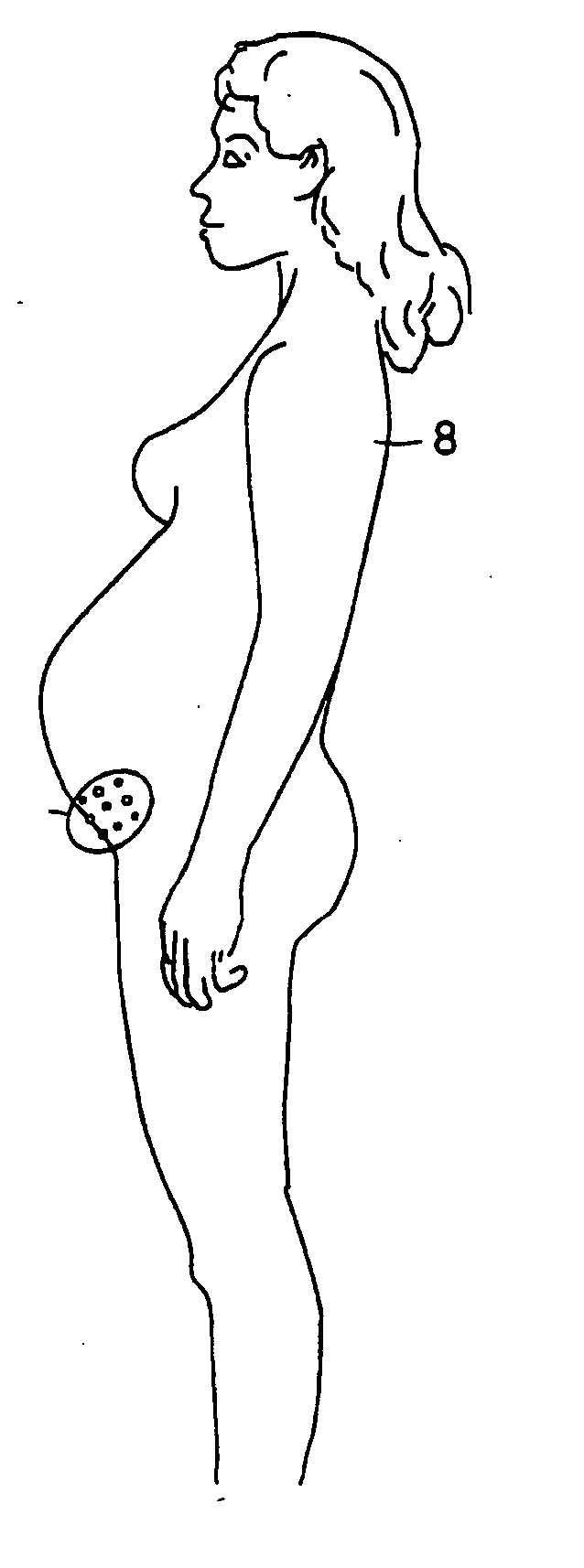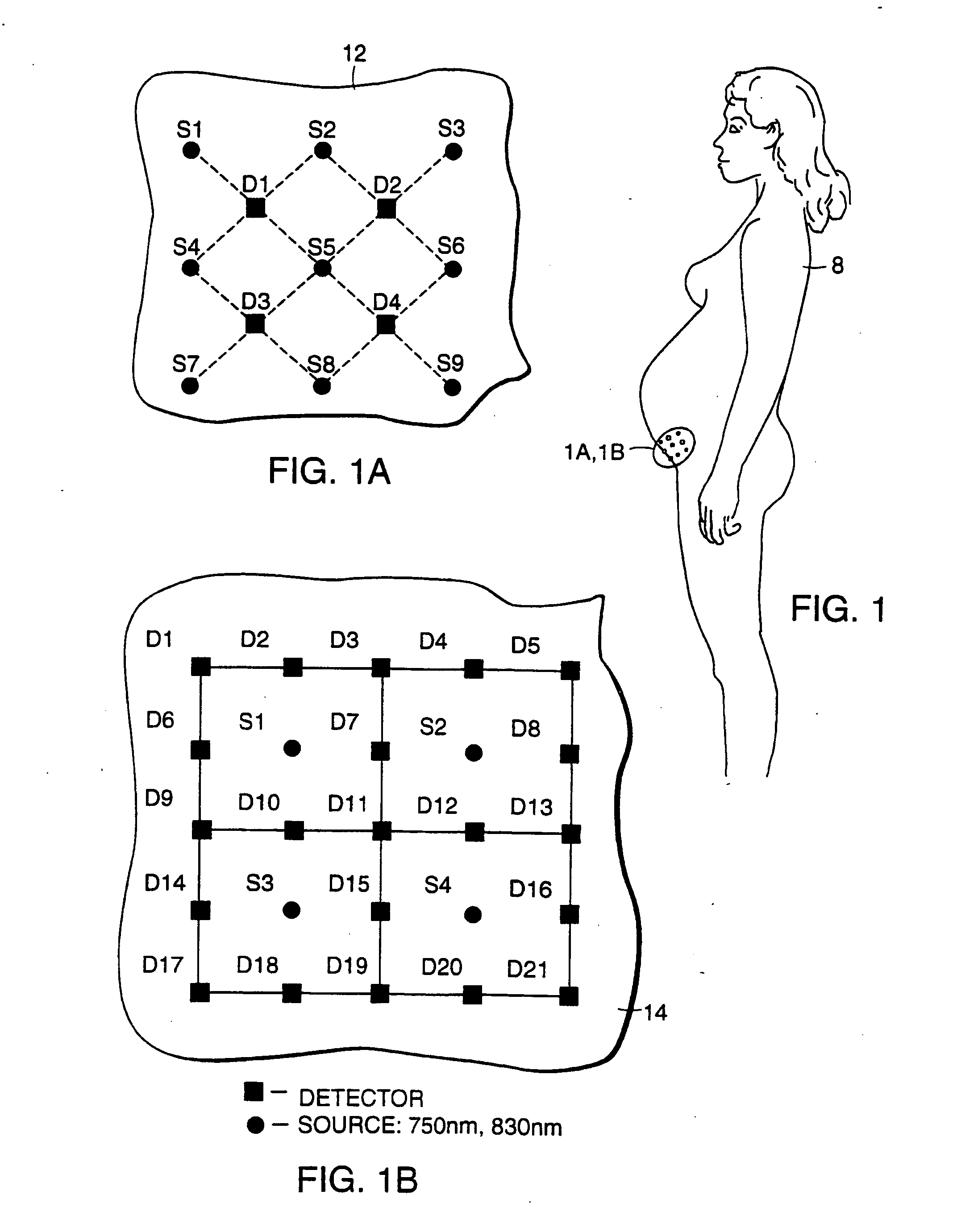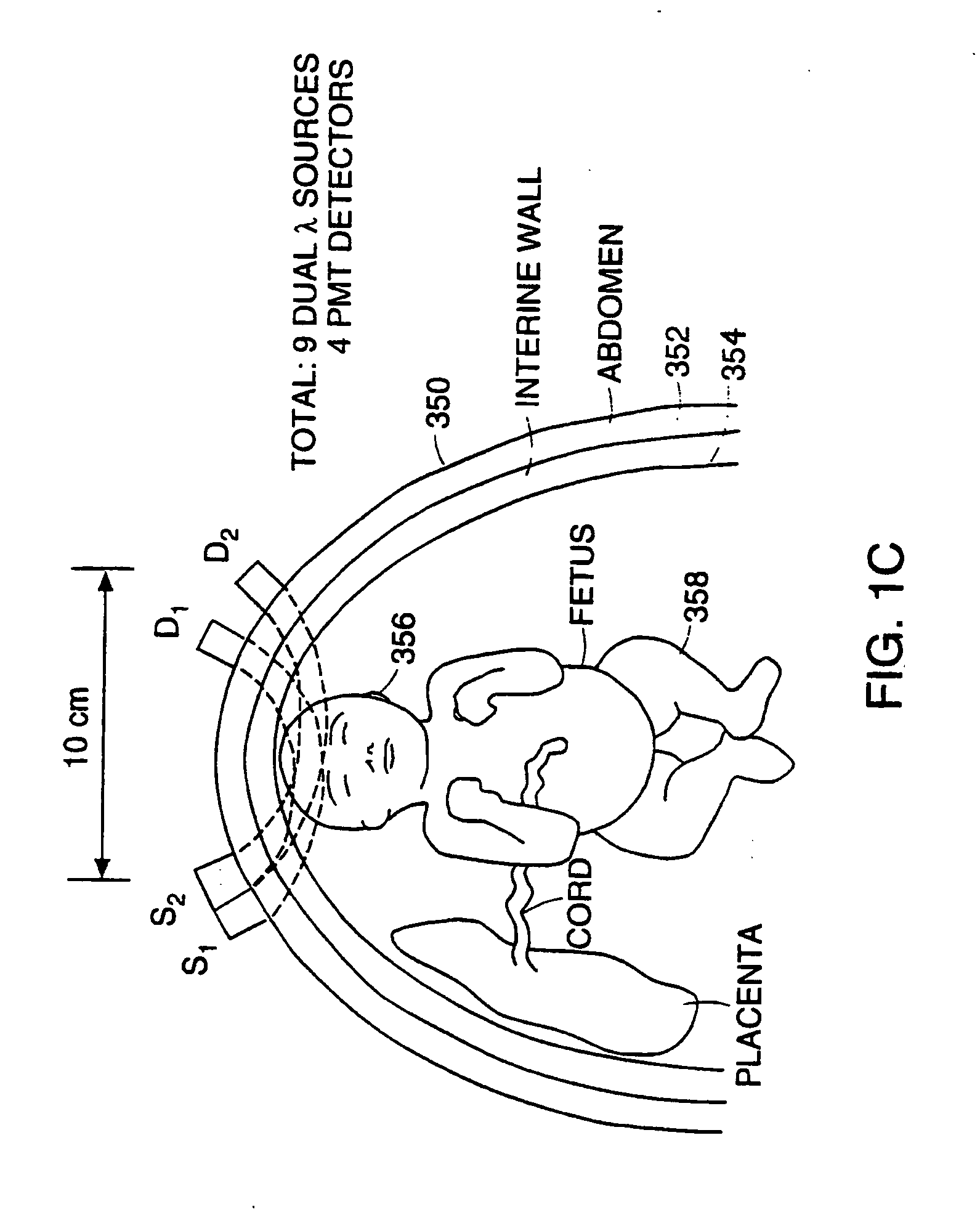Transabdominal examination, monitoring and imaging of tissue
a transabdominal or traxsthoracic technology, applied in the field of invivo examination, transabdominal or traxsthoracic noninvasive examination, can solve the problems of system not being very sensitive to tissue oxygenation, path cannot be approximated by a straight line, and infants are particularly at high risk of brain injury
- Summary
- Abstract
- Description
- Claims
- Application Information
AI Technical Summary
Problems solved by technology
Method used
Image
Examples
Embodiment Construction
Referring to FIGS. 1 through 2B, a selected fetal tissue of a fetus inside a female subject 8 is examined non-invasively using an imaging system connected to an optical module 12 or 14. Optical modules 12 and 14 include a multiplicity of light sources (e.g., laser diodes, LEDs, flashlight bulbs) providing light in the visible to infrared range and light detectors (e.g., photo multiplier tubes, Si diode detector, PIN, avalanche or other diode detectors), which may also include interference filters. The light sources and the light detectors are arranged to form selected geometrical patterns that provide a multiplicity of source-detector paths of photon migration inside the examined organ. The imaging system provides an in vivo image of the examined tissue. The image shows a location and size of an abnormal structure in the tissue, such as a tumor or bleeding. Furthermore, the image provides a qualitative and quantitative measure (e.g., metabolism, metabolic biochemistry, pathophysiol...
PUM
 Login to View More
Login to View More Abstract
Description
Claims
Application Information
 Login to View More
Login to View More - R&D
- Intellectual Property
- Life Sciences
- Materials
- Tech Scout
- Unparalleled Data Quality
- Higher Quality Content
- 60% Fewer Hallucinations
Browse by: Latest US Patents, China's latest patents, Technical Efficacy Thesaurus, Application Domain, Technology Topic, Popular Technical Reports.
© 2025 PatSnap. All rights reserved.Legal|Privacy policy|Modern Slavery Act Transparency Statement|Sitemap|About US| Contact US: help@patsnap.com



